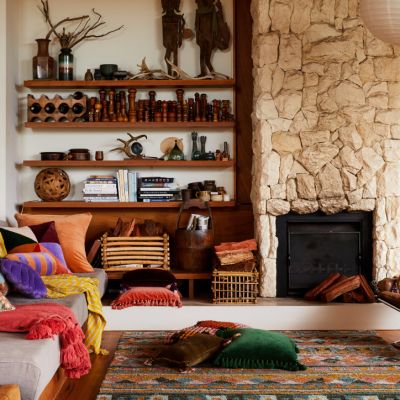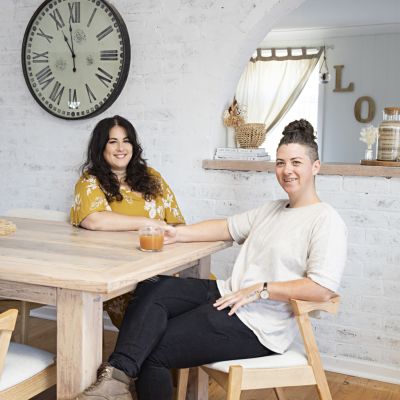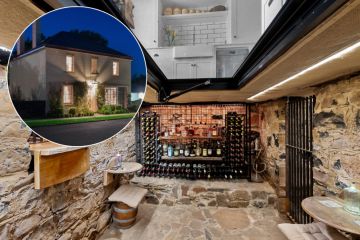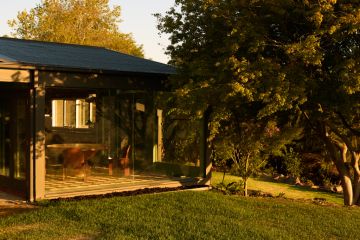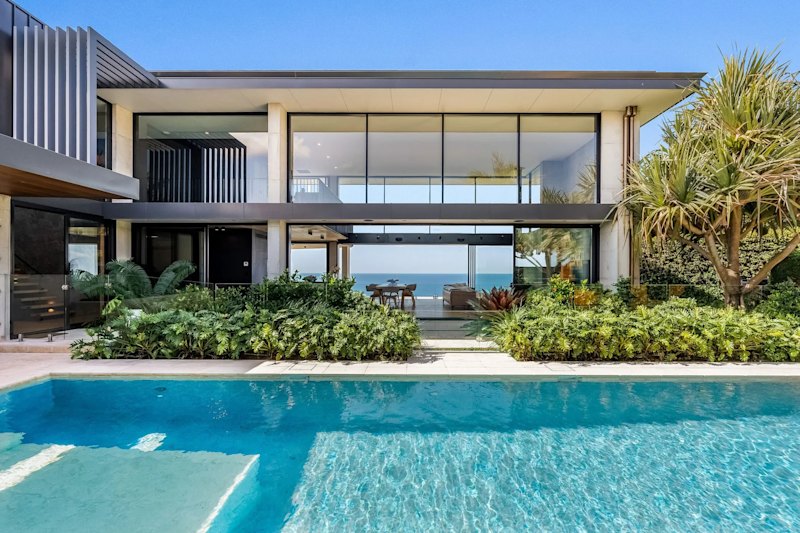6 tricks to make any small room feel much bigger
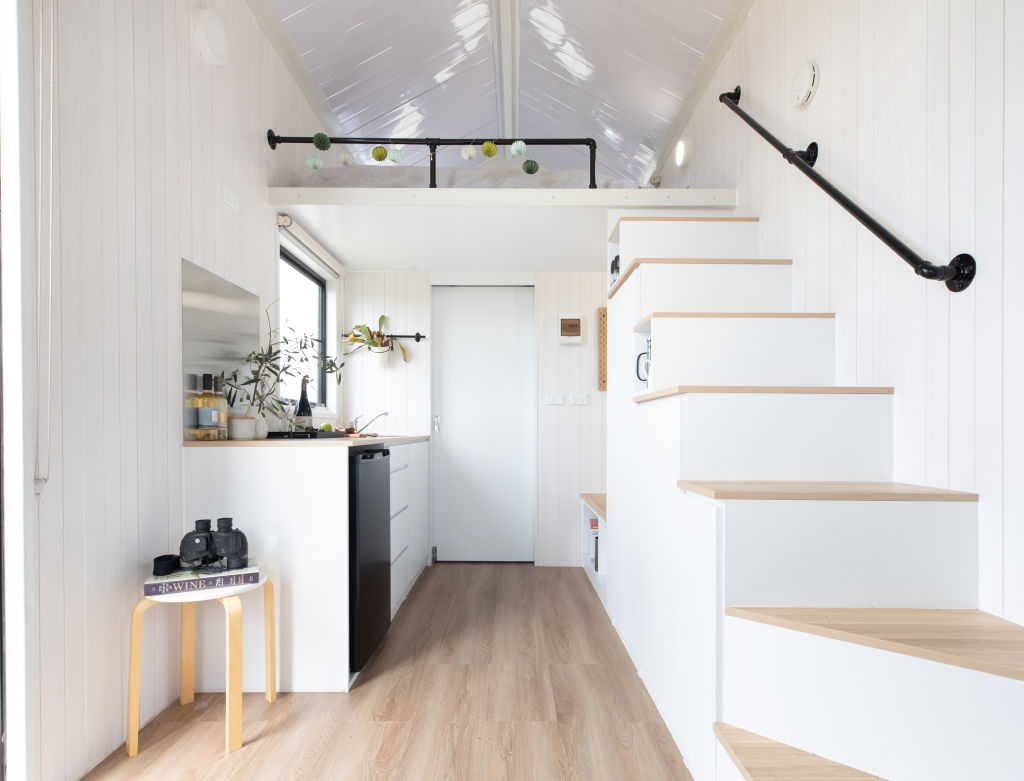
When decorating small houses or rooms, the last thing we want is to make the space feel pokey. Luckily, design experts have a bunch of tips and tricks up their sleeves to help any compact space seem larger than it is.
Trick 1: Use cool colours
One of interior designer Meredith Lee’s main principles when working with small spaces is to favour a cool colour palette over a warm one.
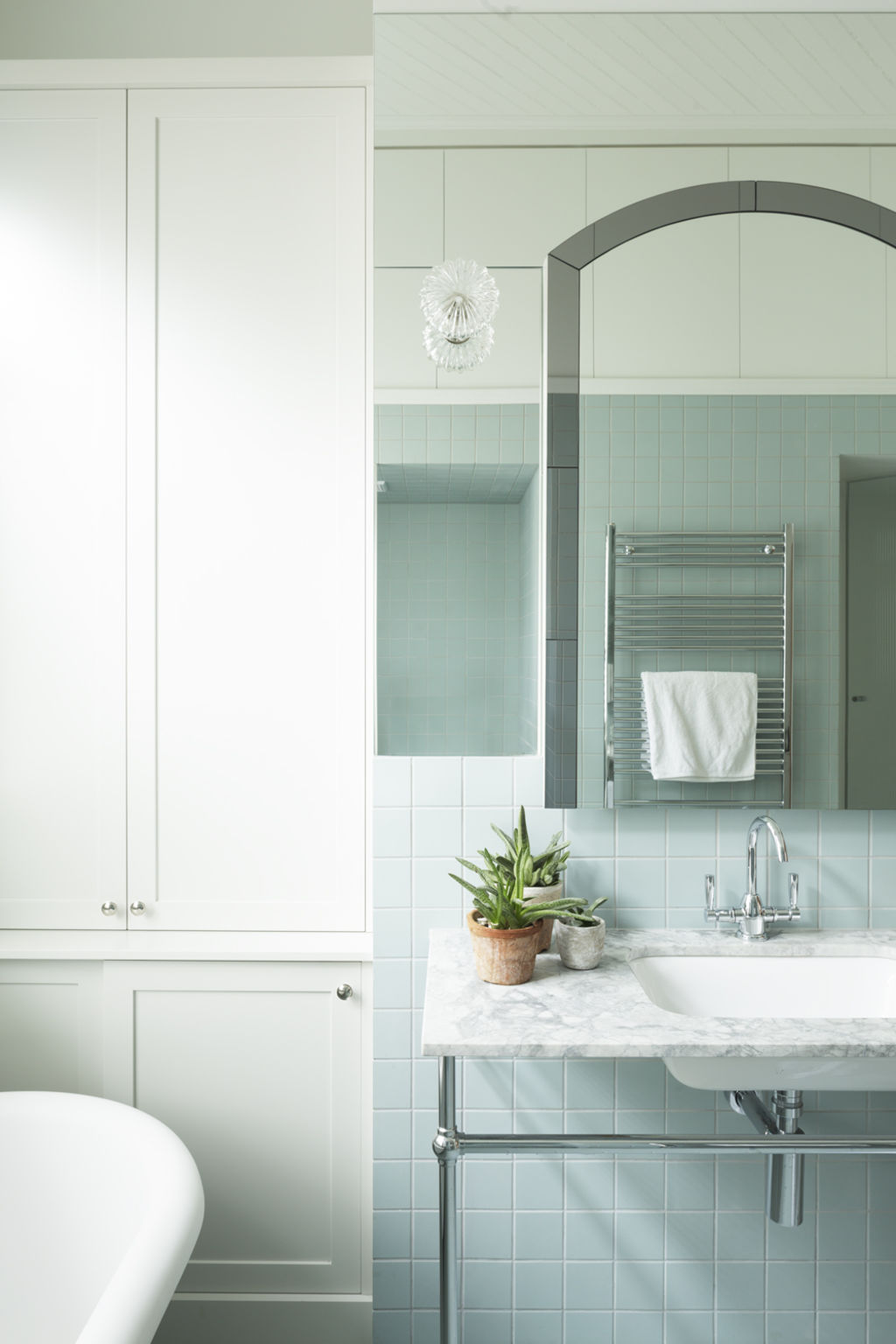
“If you use blues or greens the walls feel like they’re moving backwards, whereas if you use warmer colours on the walls – like oranges, yellows, pinks – the room will feel smaller,” she says.
Justine Lanigan, interior stylist at Destijl, likes to use bold, bright colours in her work but is careful to offset vibrant hues when working with small spaces.
“As long as everything is not colour,” she says. “Choose a neutral colour to balance it,” she says.
Trick 2: Keep things off the floor
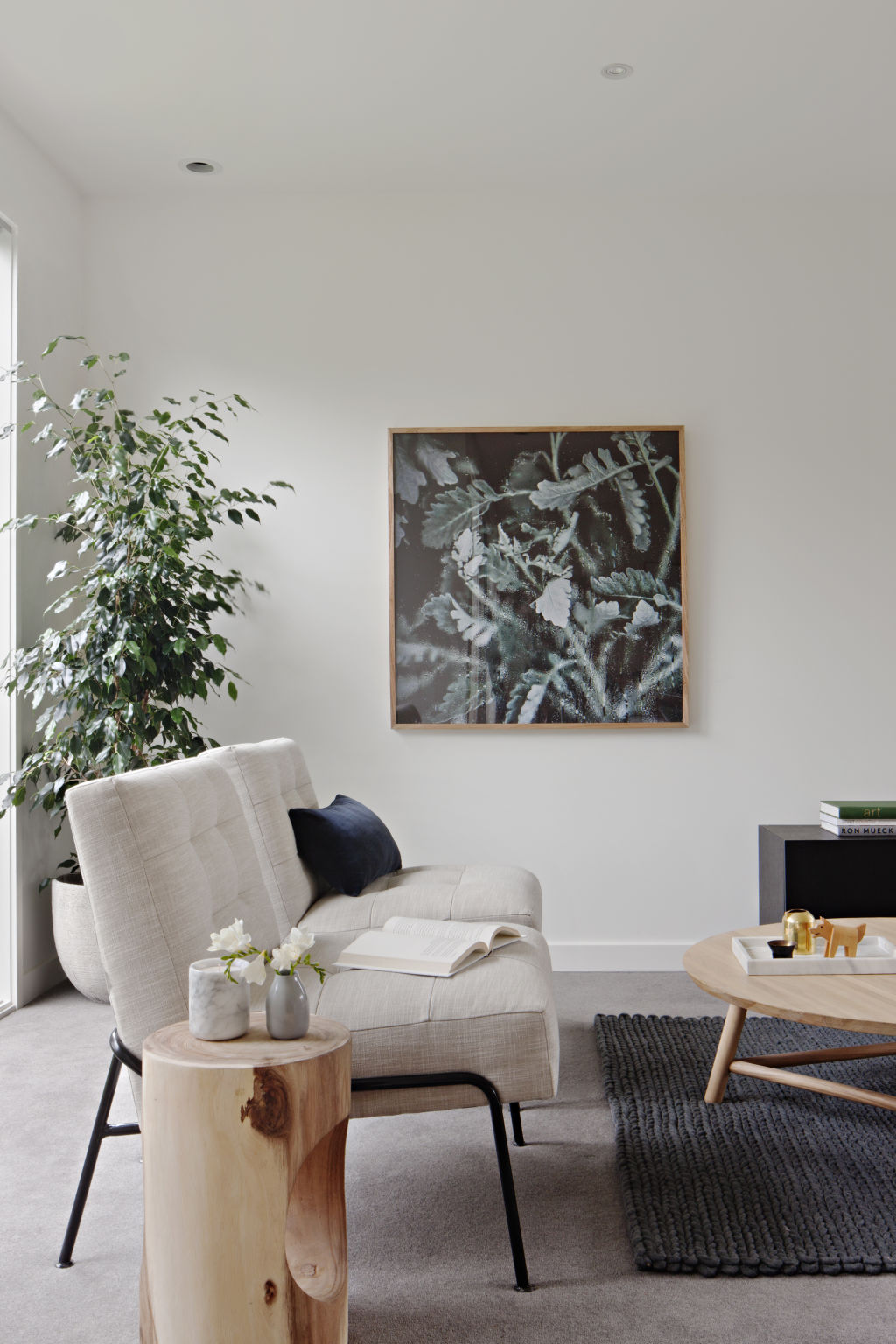
If space is limited, the experts recommend steering away from furniture that sits low to the ground.
“I’d be using a sofa that has small, maybe timber-turned legs so it sits up off the ground, so there’s a sense of space underneath the sofa,” says interior designer Annie Bowen.
Hanging plants, as opposed to pots that sit on the floor, can also free up floor space and help create a sense of height.
On that note, if you have the ceiling space you could take things up a level (literally) and install a loft bed that allows space underneath for other activities – as Tiny Away has done with its tiny houses.
“How we actually make good use of [the] space is by creating a loft where we can throw in a queen-sized bed so that we maximise the floor space,” says Tiny Away co-founder Jeff Yeo.
Trick 3: Hero one main item
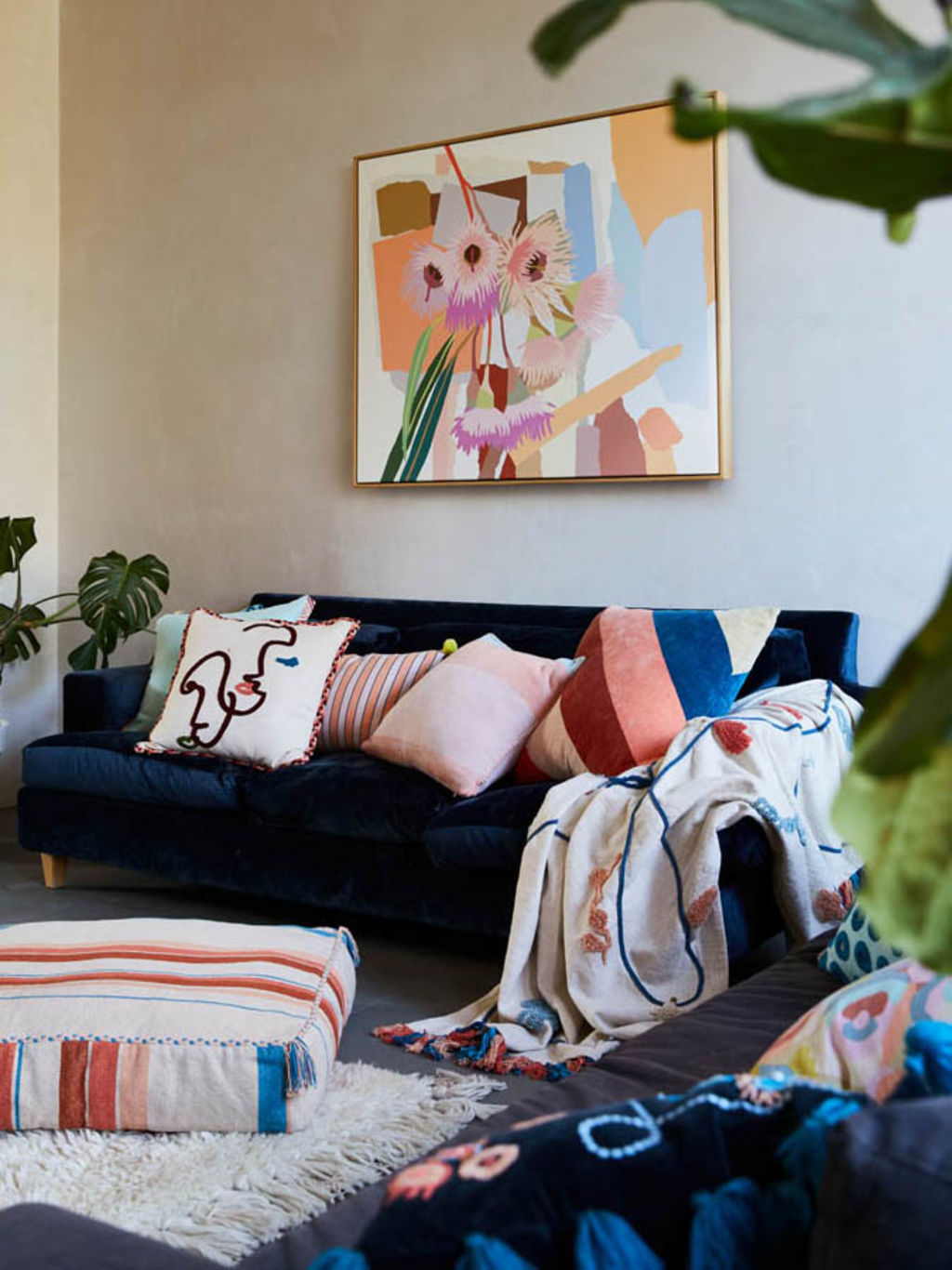
While it might seem like a daring move to put a large item in a compact space, decorating a small room with a variety of small items can make it feel cramped.
“You can actually make it a little bit fun by adding a big piece, a statement piece,” says Yeo. “That gives it a little bit more vibrancy.”
“Whether it’s artwork or whether it’s a big couch … make one thing the feature,” agrees Lanigan. “And usually I would do that in a bold colour.”
Lanigan adds that the bed linen can become the hero in a small bedroom where you can’t fit a large bed (or even a bedhead).
Trick 4: Go for a large rug
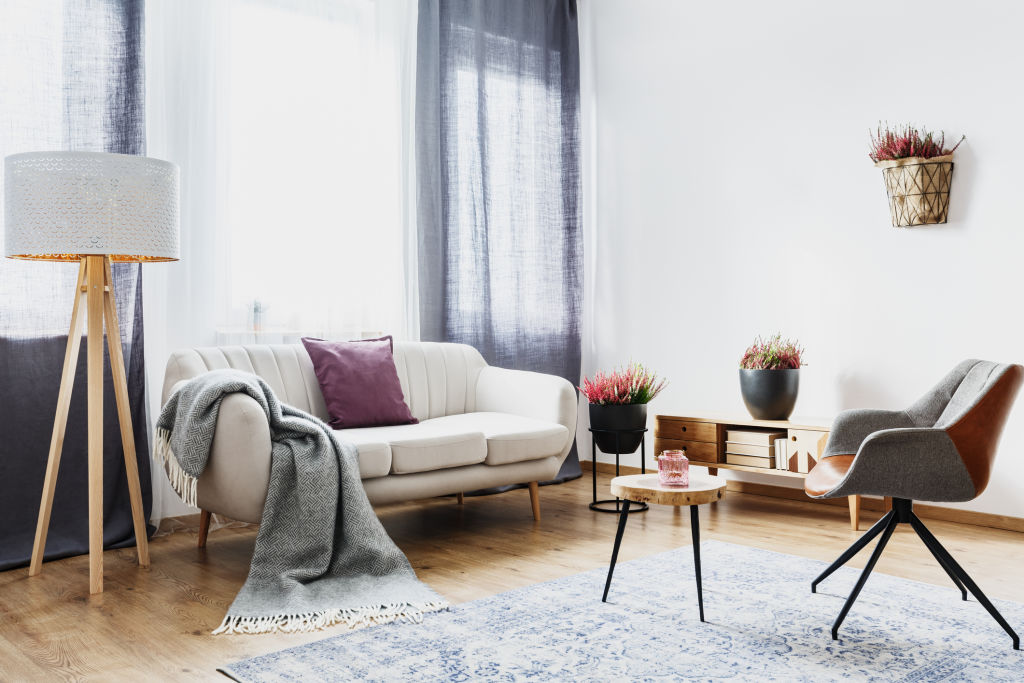
It might seem counterintuitive, but the designers say putting a small rug in a small room is a mistake.
“One thing people tend to do is buy a small rug, which visually makes the room feel smaller,” says Lee. “A larger rug that fills up the space of a room will help make a room feel larger. Putting a rug under furniture is really important to make the room feel comfortable visually.”
Trick 5: Create depth through texture and lighting
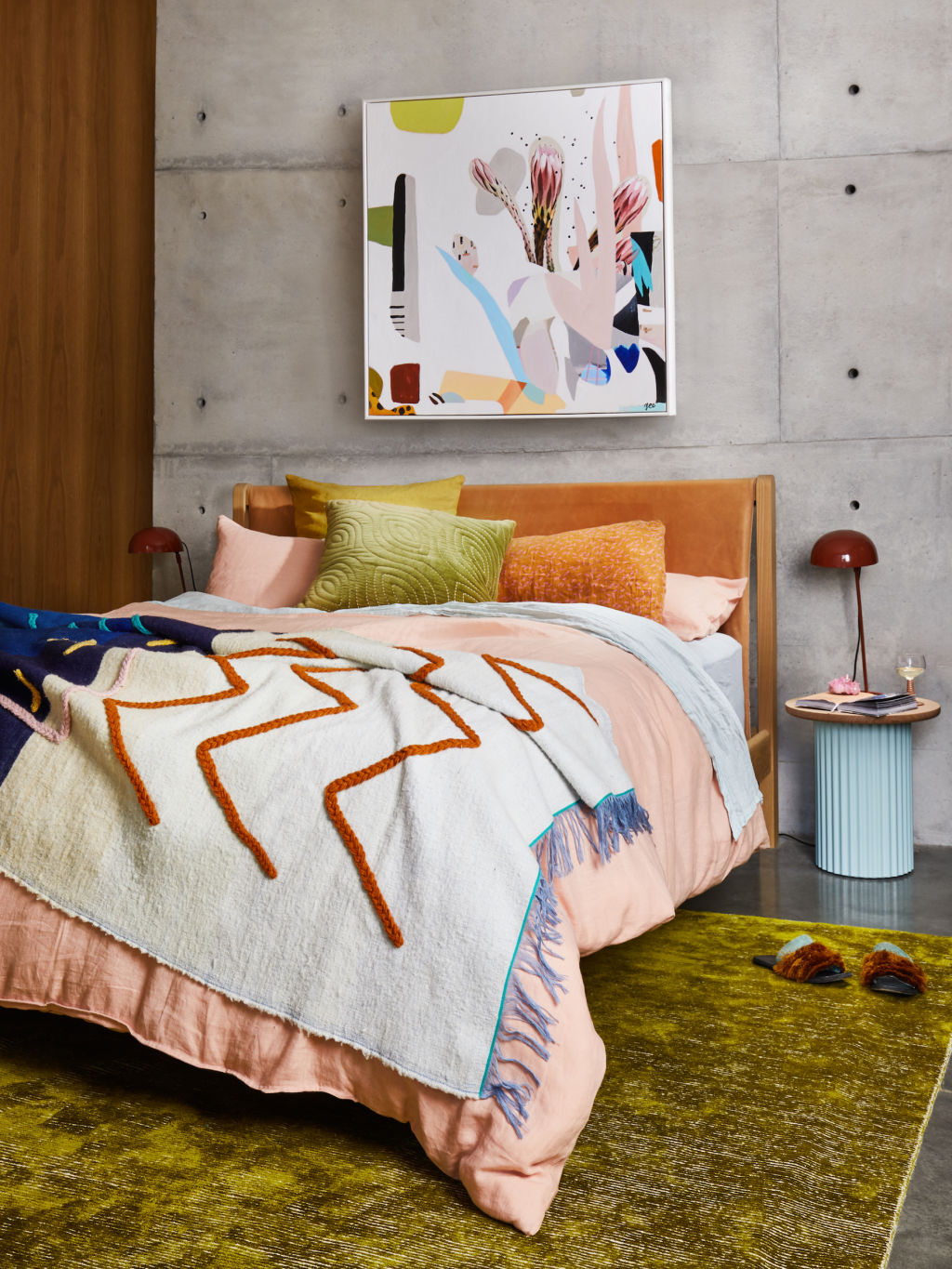
Having too many elements in a room can feel crowded and distracting, but too much sameness can create visual flatness.
“While not having lots of clutter, you still need to catch your eye in a room so you don’t kind of sum up the room all at once,” explains Lee. “In a lounge room, you might have different textures in the cushions or the upholstery … things that your eye can rest on.”
Using different lighting options – including sconce lamps and table lamps – can also help create depth and bring life to areas of dead space.
Trick 6: Get creative with storage space

In smaller kitchens, cabinetry can be taken all the way up to the ceiling to maximise storage space, and island benches can be exploited for their storage potential.
Bowen, who frequently works with custom joinery experts Blum when improving storage in smaller homes, suggests putting shelves or drawers in odd-shaped areas (like alcoves) to help stow items such as linen and placemats.
Both Yeo and Bowen are also big fans of installing drawers in the cavity space underneath the stairs.
“On a Friday afternoon when you don’t want school shoes lying around there’s somewhere to put them, and then they’re easily accessible on a Monday morning when [the kids] are off to school,” Bowen says.
We recommend
We thought you might like
States
Capital Cities
Capital Cities - Rentals
Popular Areas
Allhomes
More
